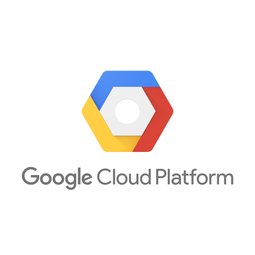公司规模
SME
地区
- America
国家
- United States
产品
- Solstice® LED modules
技术栈
- Google Analytics
- Google AdWords
- Remarketing with Google Analytics
- Smart Lists
- Conversion Optimizer
实施规模
- Enterprise-wide Deployment
影响指标
- Revenue Growth
- Customer Satisfaction
- Brand Awareness
技术
- 分析与建模 - 实时分析
适用行业
- 电子产品
适用功能
- 销售与市场营销
用例
- 需求计划与预测
服务
- 数据科学服务
关于客户
Global Tech LED 是一家 LED 照明设计和制造公司,专门生产用于商业和工业照明的 LED 改装套件和灯具。该公司总部位于佛罗里达州博尼塔斯普林斯。它是一家快速增长的 LED 供应商,面向美国和国际市场。该公司最近推出了 Solstice® LED 模块,这些模块在美国制造,与 HID 灯具普遍兼容,非常适合改装。
挑战
Global Tech LED 是一家 LED 照明设计和制造公司,该公司希望提高其 Solstice® LED 模块的采用率。这些模块与 HID 灯具普遍兼容,是改造的理想选择。该公司已成功利用 Google AdWords 增加了电话客户数量。然而,它面临着保持访客参与度、将他们带回网站并让他们进入购买渠道的挑战。该公司希望专注于最有可能参与并进行购买的高潜力客户。
解决方案
为了应对这一挑战,Global Tech LED 实施了 Google Analytics 再营销。新的再营销即时激活功能让团队能够快速轻松地启用再营销。该公司使用 Google Analytics 的智能列表自动识别最有可能参与的用户,然后使用更具体的产品页面向他们进行再营销。这使得 Global Tech LED 能够在高质量用户返回网站时专注于与他们进行更深入的互动。该公司还开始使用 Google 的转化优化工具自动调整出价以获得更多转化。通过专注于效果最佳的广告系列,它更有效地分配了营销成本。
运营影响
数量效益

Case Study missing?
Start adding your own!
Register with your work email and create a new case study profile for your business.
相关案例.

Case Study
Remote Temperature Monitoring of Perishable Goods Saves Money
RMONI was facing temperature monitoring challenges in a cold chain business. A cold chain must be established and maintained to ensure goods have been properly refrigerated during every step of the process, making temperature monitoring a critical business function. Manual registration practice can be very costly, labor intensive and prone to mistakes.

Case Study
Cloud Solution for Energy Management Platform-Schneider Electric
Schneider Electric required a cloud solution for its energy management platform to manage high computational operations, which were essential for catering to client requirements. As the business involves storage and analysis of huge amounts of data, the company also needed a convenient and scalable storage solution to facilitate operations efficiently.

Case Study
Leveraging the IoT to Gain a Competitive Edge in International Competition
Many large manufacturers in and outside Japan are competing for larger market share in the same space, expecting a growing demand for projectors in the areas of entertainment, which requires glamor and strong visual performance as well as digital signage that can attract people’s attention. “It is becoming more and more difficult to differentiate ourselves with stand-alone hardware products,” says Kazuyuki Kitagawa, Director of Service & Support at Panasonic AVC Networks. “In order for Panasonic to grow market share and overall business, it is essential for us to develop solutions that deliver significant added value.” Panasonic believes projection failure and quality deterioration should never happen. This is what and has driven them to make their projectors IoT-enabled. More specifically, Panasonic has developed a system that collects data from projectors, visualizes detailed operational statuses, and predicts issues and address them before failure occurs. Their projectors are embedded with a variety of sensors that measure power supply, voltage, video input/ output signals, intake/exhaust air temperatures, cooling fan operations, and light bulb operating time. These sensors have been used to make the projector more intelligent, automatically suspending operation when the temperature rises excessively, and automatically switching light bulbs. Although this was a great first step, Panasonic projectors were still not equipped with any capability to send the data over a network.






